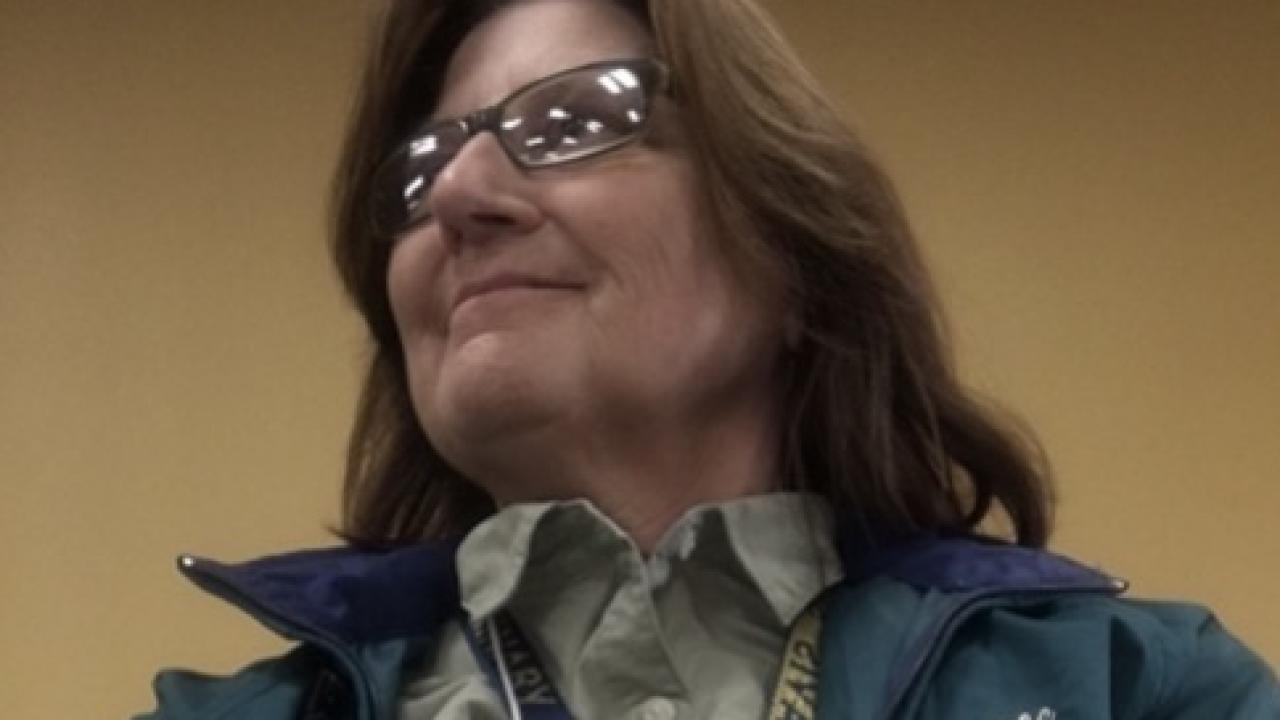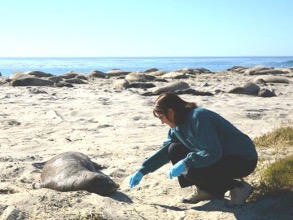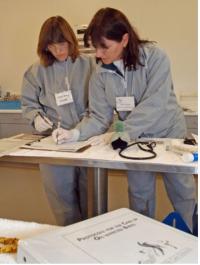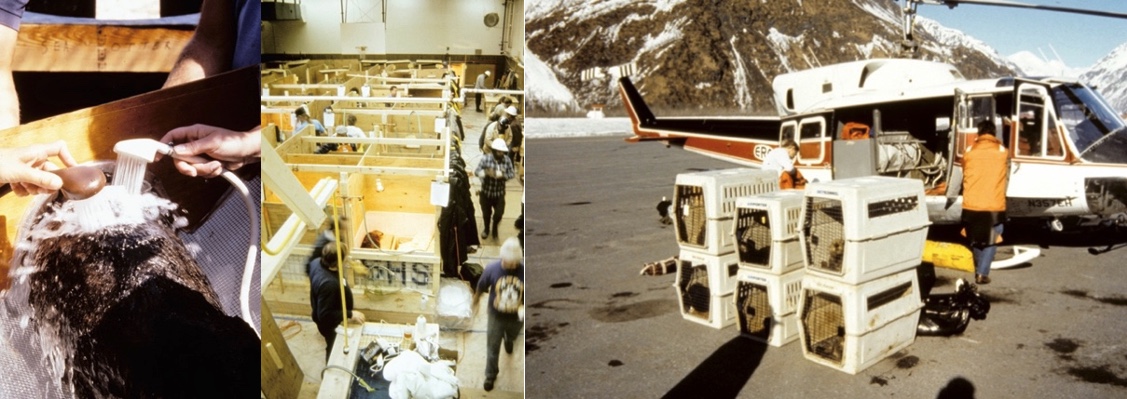
30 years! Where does the time go?
My name is Dr. Pam Yochem and I am a member of the Advisory Board and Scientific Advisory Committee for California’s Oiled Wildlife Care Network (OWCN). Dr. Mike Ziccardi invited me to do a guest blog post in recognition of the 30th anniversary of the OWCN. I was happy to do so, as involvement with the OWCN has been one of the highlights of my career.

My involvement in the oil spill community has included research, teaching and service through my associations with Hubbs-SeaWorld Research Institute, SeaWorld, and UC Davis School of Veterinary Medicine.
In the early 1980s, I assisted with research designed to evaluate whether migrating gray whales could detect (and would avoid) oil on the surface of the water. We tracked the whales movements by land and sea as they swam through natural seeps in central California and found that their respiration rates and swim speeds changed after surfacing in a sheen. I’ve worked with colleagues from academia, non-profit research organizations, the oil industry, oceanariums, and state and federal resource agencies to test techniques for cleaning oiled sea otter pelage, and to collect baseline data on health parameters of free-ranging pinnipeds, cetaceans, sea otters and aquatic birds (including measuring background levels of polycyclic aromatic hydrocarbon levels in healthy wild harbor seals).
I have helped to train OWCN’s first responders on the effects of oil on wildlife and on the care of oiled wildlife. In 2004, I and several other OWCN members wrote the first formal protocols for the care of oiled marine mammals in California. These protocols formed the basis for the national guidelines developed by the OWCN (Drs. Ziccardi and Johnson) for the National Oceanic and Atmospheric Administration.


I was an informal advisor during the early days of the formation of the OWCN and have been a member of the Advisory Board since it was established in 1994. I am also serving as a member of the Scientific Advisory Committee. As a consulting veterinarian for SeaWorld, I responded to a number of oil spills in southern California from 1996-2015.
I was asked this question, "Over the past 30 years with the OWCN, what method or practice has remained tried and true?"
What has remained unchanged is the dedication of everyone associated with the OWCN (and the CDFW Office of Oil Spill Prevention and Response) to the mission of providing the best achievable care for oiled wildlife.
The Exxon Valdez Oil Spill in 1989 (OWCN blog 15 April 2010 Exxon Valdez), followed closely by the American Trader spill in 1990, were wake-up calls for the need for a coordinated approach to all aspects of marine oil spill prevention and response in California. In 2014, the OWCN’s mandate was expanded to cover all state waters at risk of an oil spill. The enabling legislation (the Lempert-Keene-Seastrand Oil Spill Prevention and Response Act) specified that the OWCN Advisory Board include representatives from the oil industry, wildlife rehabilitation organizations and academia, and I believe this diversity of expertise, opinions and experience has been critical to the OWCN’s success. The Network’s commitment to transparency, communication and mutual respect, its pro-active approach to preparedness and process improvement, and its focus on data-driven decision-making during spills have made it a model for other wildlife emergency response organizations throughout the nation and the world (links to OWCN blogs 20 April 2020 Deepwater Horizon, 9 October 2020 Wildlife Disaster Network).

It has been an honor to work with such a talented team of wildlife rescuers, scientists, veterinarians, oil industry representatives and resource managers – people with very different backgrounds and job descriptions who are making a positive difference for California’s wildlife and environment.
